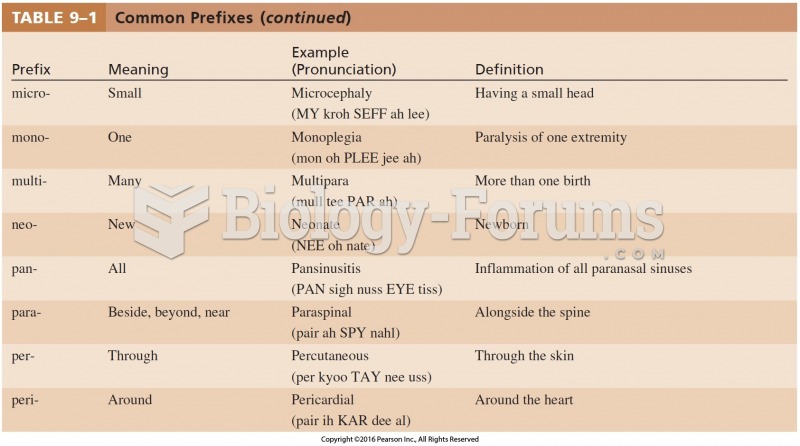|
|
|
There are 60,000 miles of blood vessels in every adult human.
Asthma-like symptoms were first recorded about 3,500 years ago in Egypt. The first manuscript specifically written about asthma was in the year 1190, describing a condition characterized by sudden breathlessness. The treatments listed in this manuscript include chicken soup, herbs, and sexual abstinence.
Adolescents often feel clumsy during puberty because during this time of development, their hands and feet grow faster than their arms and legs do. The body is therefore out of proportion. One out of five adolescents actually experiences growing pains during this period.
On average, the stomach produces 2 L of hydrochloric acid per day.
Nearly 31 million adults in America have a total cholesterol level that is more than 240 mg per dL.







